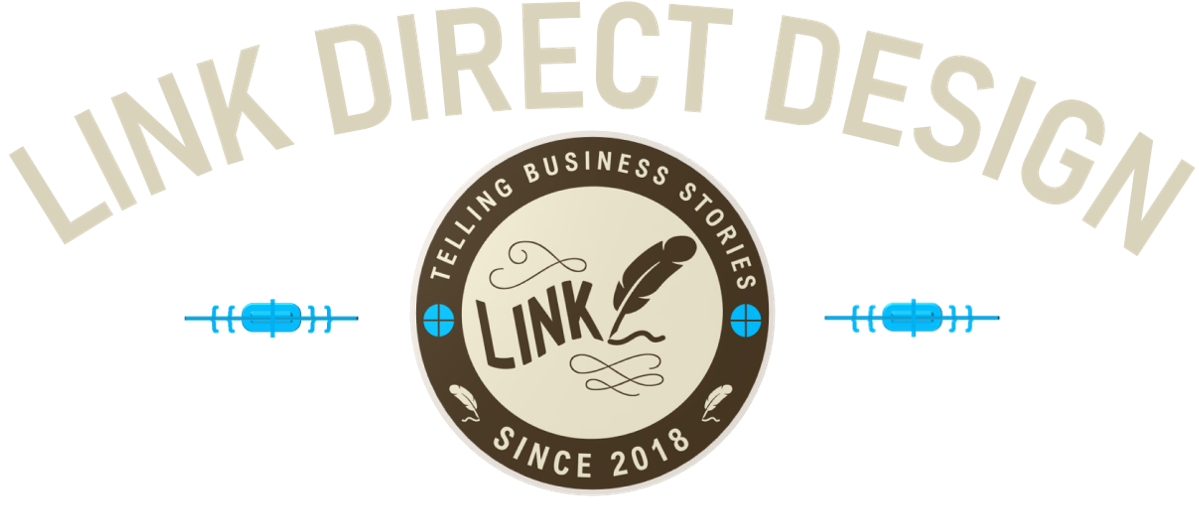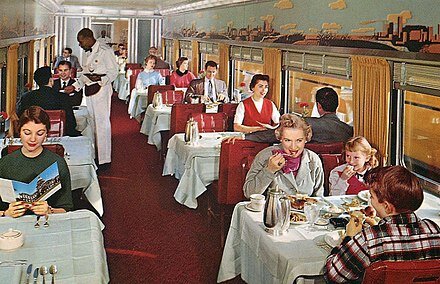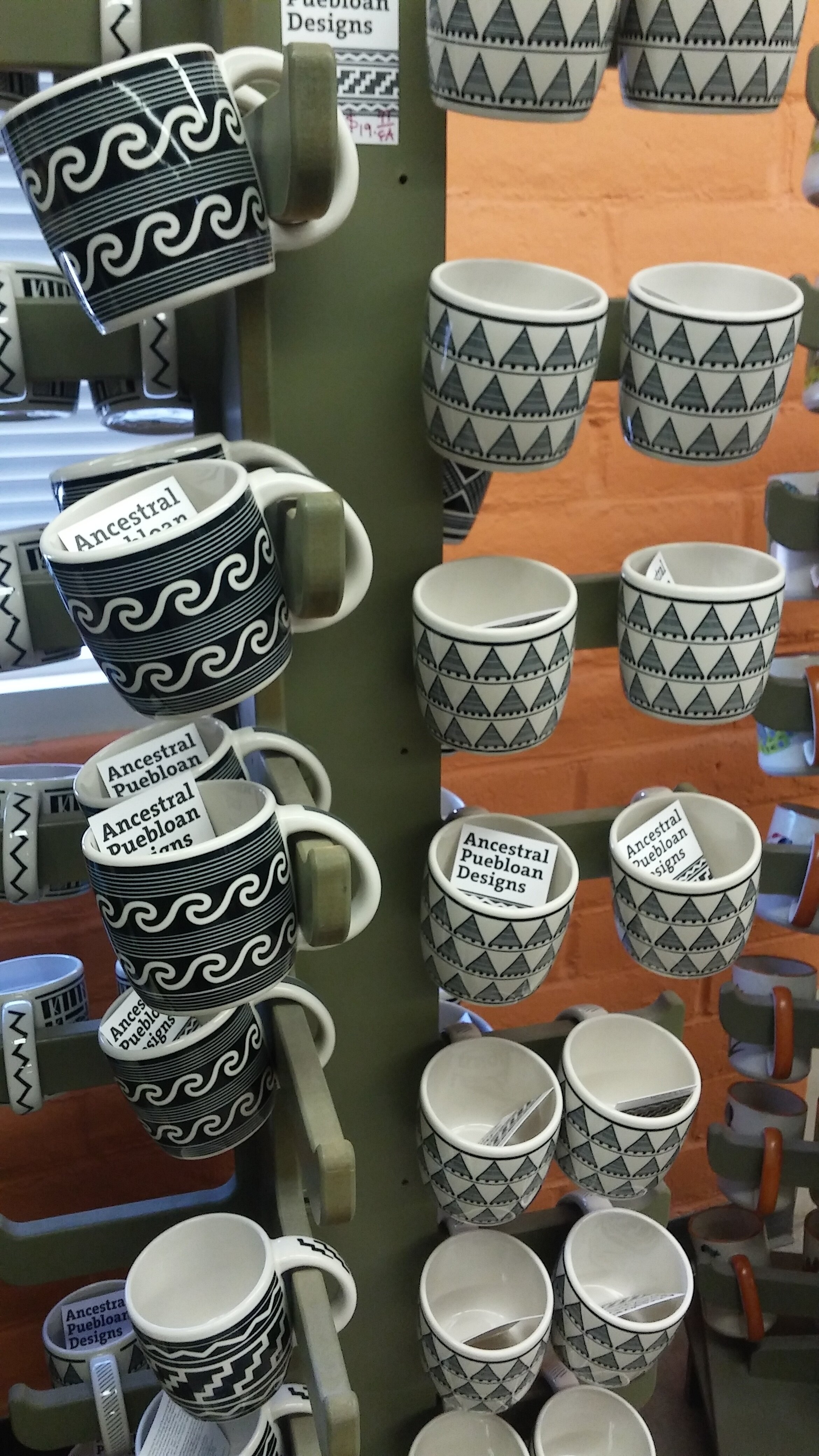How was the Iconic Southwest "Invented?"
THE MARVELOUS DESIGNS OF MARY JANE ELIZABETH COLTER
AND HER FUTURE TUCSON “MIMBRENO” CONNECTION EXPLAINED
Fred Harvey Company postcard of Colter’s Hopi House.
Detroit Publishing Company, Public domain, via Wikimedia Commons
Mary Elizabeth Jane Colter had a lasting effect on one of Arizona's classic icons, the architecture of select buildings within the Grand Canyon Village. Most recognize her stellar work better than they recognize her name. Ms. Colter designed a very notable handful of memorable buildings Arizona is widely associated with, while working for the Fred Harvey Company as master architect and decorator.
Mary Elizabeth Jane Colter held that position for 46 memorable years, from 1902 to 1948*. It was a golden era of breathtaking National Park Service architecture being built and one that also saw the building of iconic depots, restaurants, shops, and lodging along the Santa Fe Railway. Colter was in the middle of the theory and design of many of these birthings. The AT&SF line extended across Arizona from Gallup, NM, through Flagstaff, AZ, and on to Needles, CA. A branch led from Williams, AZ, to a station just south of the El Tovar Hotel in the Grand Canyon Village.
Entry to Hopi-House, an iconic Colter design visited by hundreds of thousands each year.
Jared from Clermont, CC BY 2.0, via Wikimedia Commons
The Fred Harvey Company worked in close consort with the AT&SF, and that railway brought customers and tourists to the Southwest along the Super Chief route from Kansas City, MO, to Pasadena, CA. In the process of creating a demand and interest for travel to and around the distinctive Southwest states, Harvey’s first-rate hospitality and restaurant services led to gaining concessions contracts on the South Rim of the Grand Canyon.
As designer, Mary Colter brought an intense interest in Native American design and culture to her work. Today, some are critical of the appropriation of cultures such as the Navajo, Pueblo and Hopi peoples for commercial exploitation. And these are, from a certain perspective, valid concerns. However, for people like Colter, her admiration for the peoples and their ancient counterparts in the areas of pottery, rug weaving, dress and ceremonial artwork was genuine and well-intentioned. Her designs for Hopi House, Hermit’s Rest, Lookout Studio and Desert View Watchtower are mistaken by thousands of visitors to the Grand Canyon each year as Indian architecture from hundreds of years before. That is until they learn the story of these buildings and their architect.
Coulter's other major work in Arizona at La Posada hotel and the Santa Fe depot in Winslow is currently being restored. That enterprise was, she once reported, one of her favorite projects.
Colter’s connection to Tucson would under normal circumstances be limited, as the 4,000 years of human life known to have continuously existed in the Tucson Basin was 250 miles from the route of the Santa Fe Railway across northern Arizona. No Harvey Houses or “Indian Detours” came as far south as The Old Pueblo. However, one lasting and proximate relationship to Tucson is that she did create a motif based on Mimbres Indian design that was applied to her patterns for the Super Chief dining cars dinnerware. The Rio Mimbres Valley in southwestern New Mexico was the center of the Mimbres civilization which was most active around 1100 AD. The Mimbres, and related Mogollon cultures, abutted the Hohokam of the Tucson Basin.
Colter crafted 700 pen and ink drawings of Mimbres pottery from excavations at the Swarts Ruin in New Mexico. She used these in creating what she christened "Mimbreno" china, produced from 1936 to 1970 by Syracuse China of New York. However today, reproductions of her beautiful and extensive designs are made for the Grand Canyon National Park Service store, and other outlets by a Tucson business. They are produced at the H.F. Coors factory on 1600 S Cherrybell Stravenue. It is not far from the intersection of E 22nd St and S Kino Parkway.
The Mimbres Cultural Heritage Site is located in a remote area of southwestern New Mexico, to the east of Silver City.
Colter explaining a feature on one of her architectural elevations.
H.F. Coors, which began in Colorado as part of the Coors family businesses, moved its pottery making operations from Colorado to Inglewood, CA, where eventually after many years of successful production, the operation became insolvent. In 2003, the company assets and name were bought by Catalina China Company of Tucson where reproductions of Colter’s Mimbreno China pattern are produced again. The H.F. Coors moniker was retained, and there is a showroom for the Mimbreno line and a number of other restaurant-quality dinnerware produced entirely on-site. 25,000 pieces are created and shipped in a typical week from this unique Tucson business.
Dining car. Each railroad had distinctive china.
On “1st Saturday at the Potter’s Yard” discount pottery, discontinued items and seconds are offered in and around the factory along with occasional tours led by veteran and very interesting employees. The imposing 200-foot tunnel kiln is impressive to see and be explained by an expert. Your guide will generally describe the various steps to fine, heavy-duty dinnerware fabrication in the areas where each process takes place. Tours by reservation only are also given on Tuesday mornings at 10 for a modest fee which was $10 at the time of this post.
UPDATE: 1st Saturdays have changed!
"Instead of holding a First Saturday sale each month, in early 2022 we began selling factory seconds every day in the retail store and on 9 large carts outside. Each week, we produce (roughly) one 5' high pallet of seconds, which are then put out on the carts. So in addition to now being able to purchase seconds every day, the options are constantly changing!”
*Being a woman in the field of architecture in the late 19th and early 20th Centuries, her work had to be signed off on as approved by, or the work of, others within the Fred Harvey Company. Those with architectural credentials at the time were 100 percent male. She was a trailblazer for women in her field, and in fact, women in many technical fields.
Gallery - H. F. Coors Factory
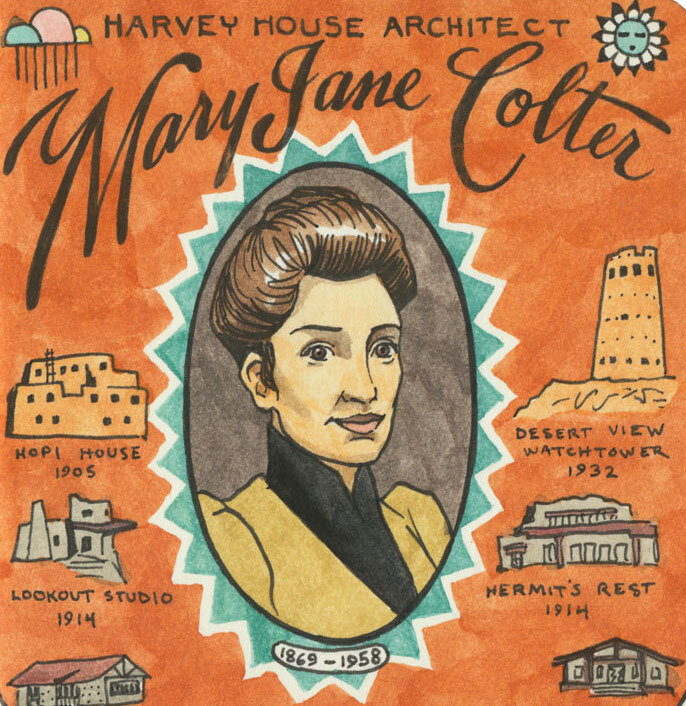

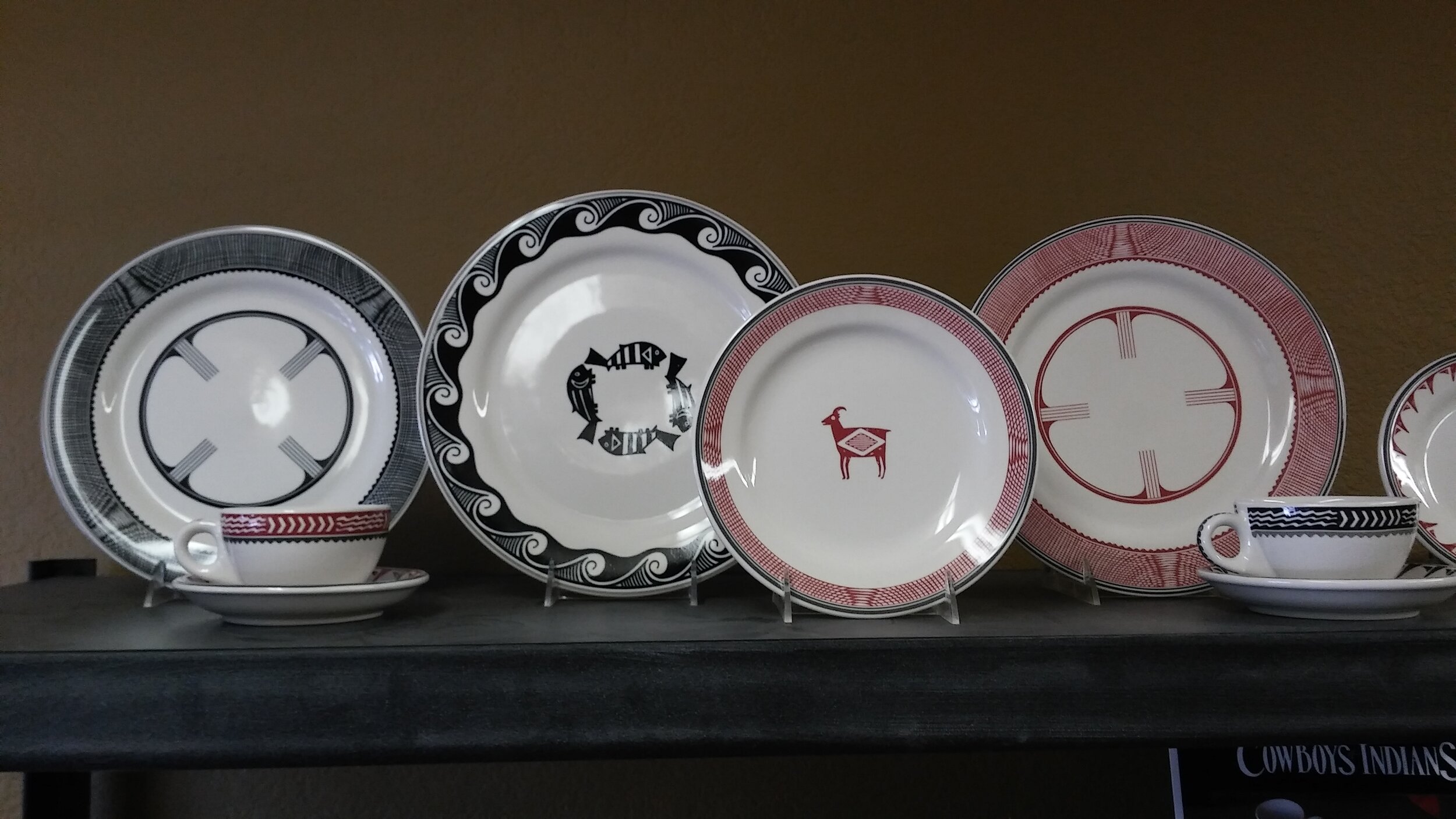
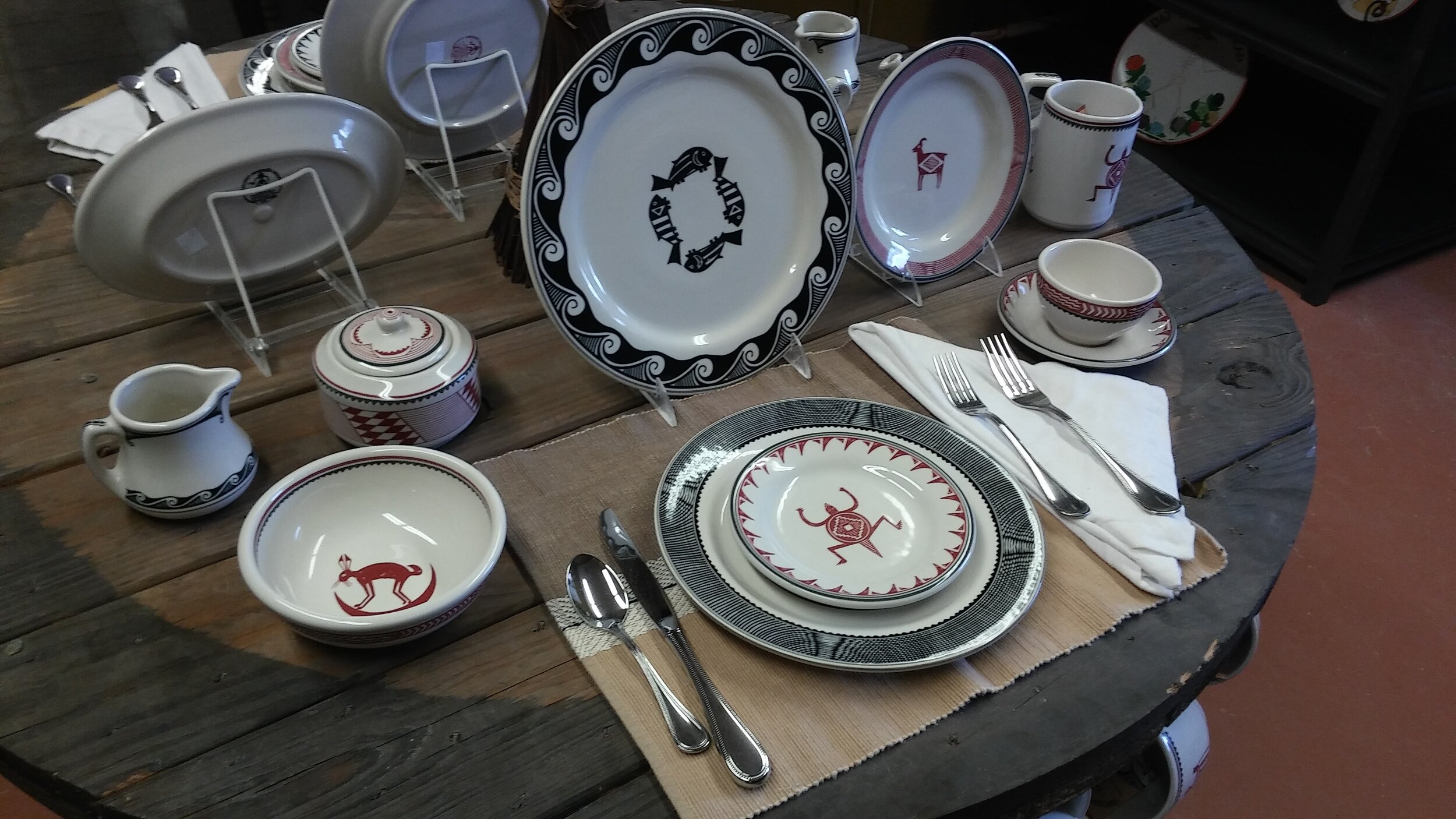
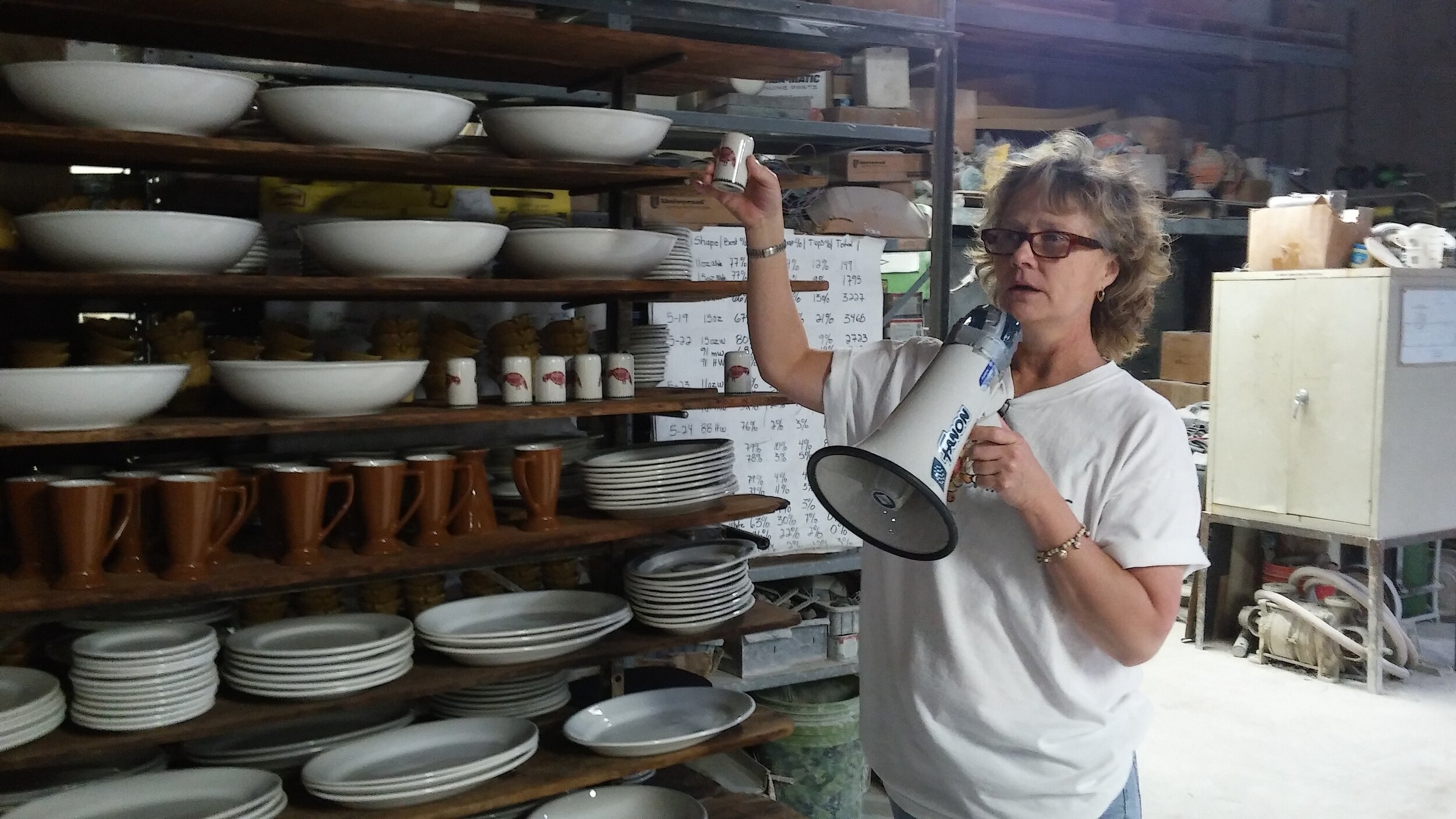
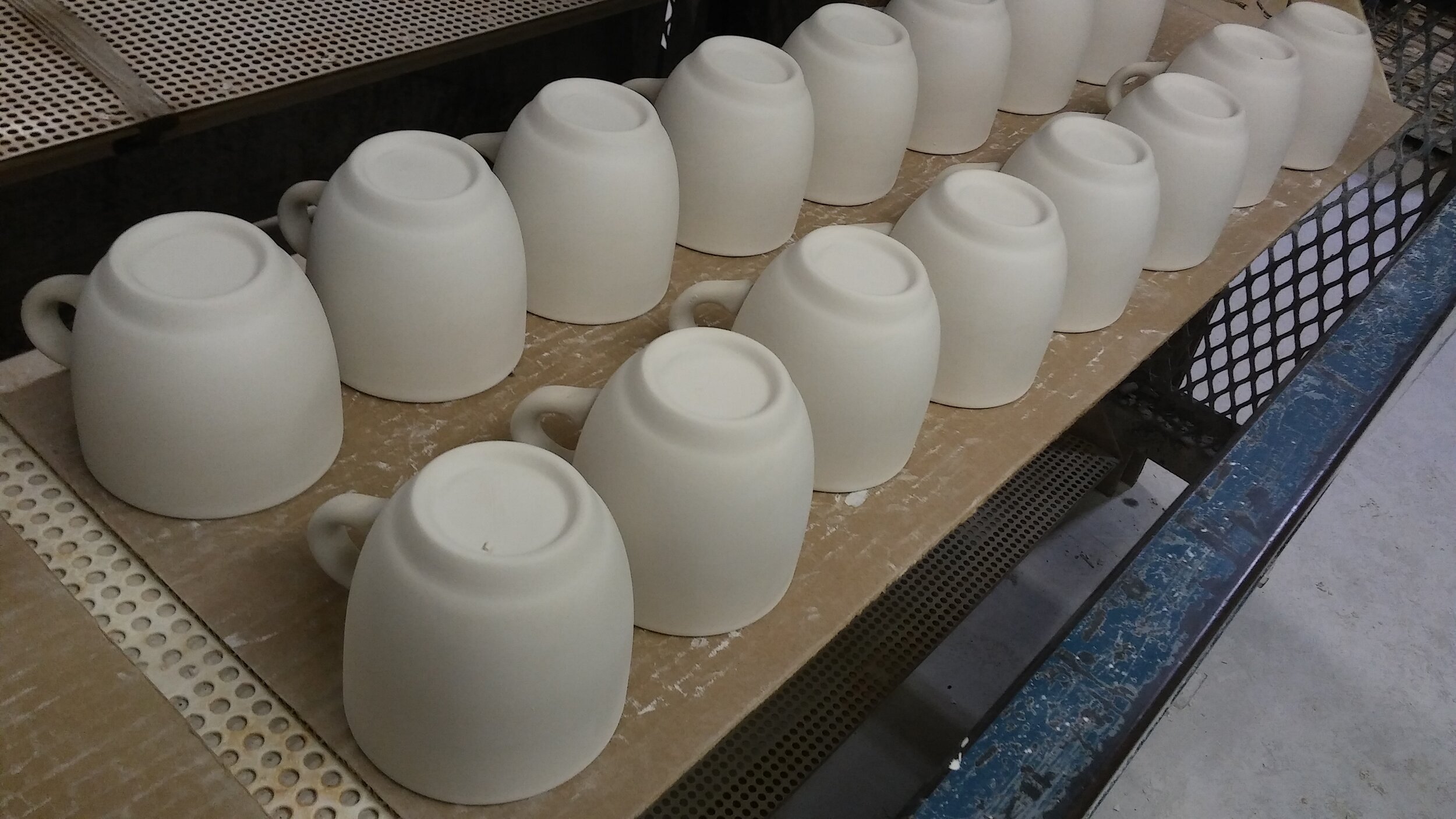
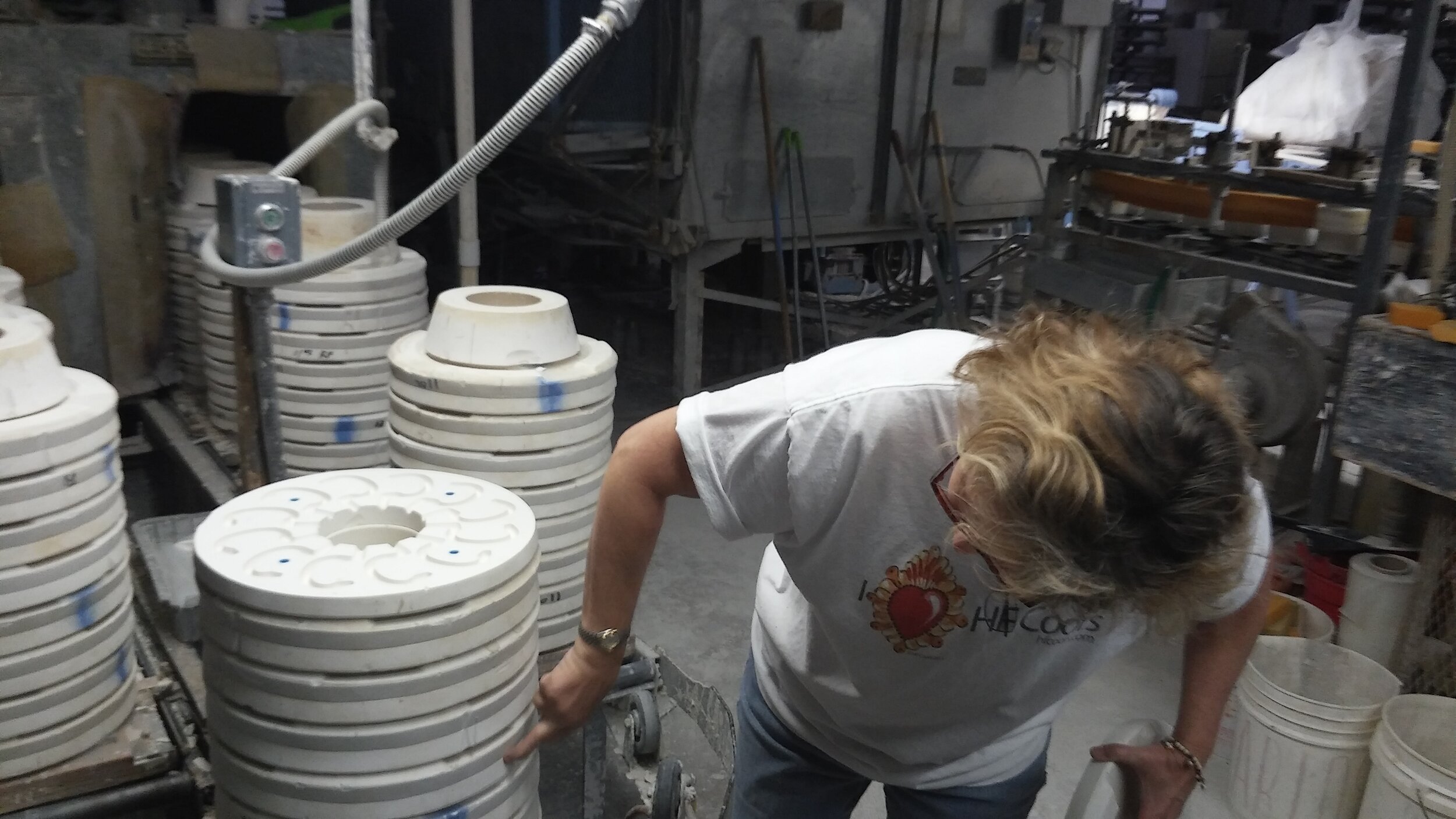
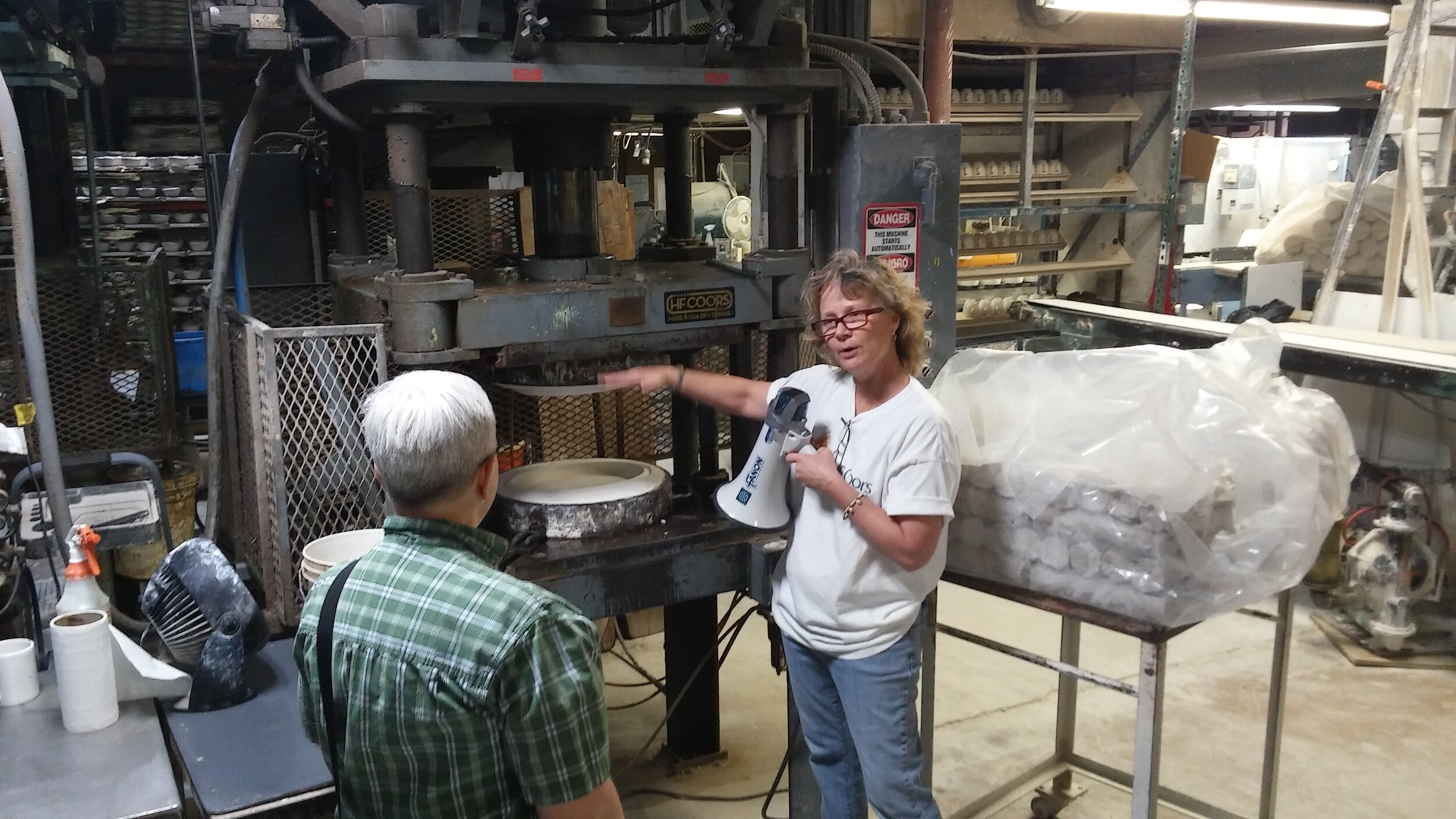
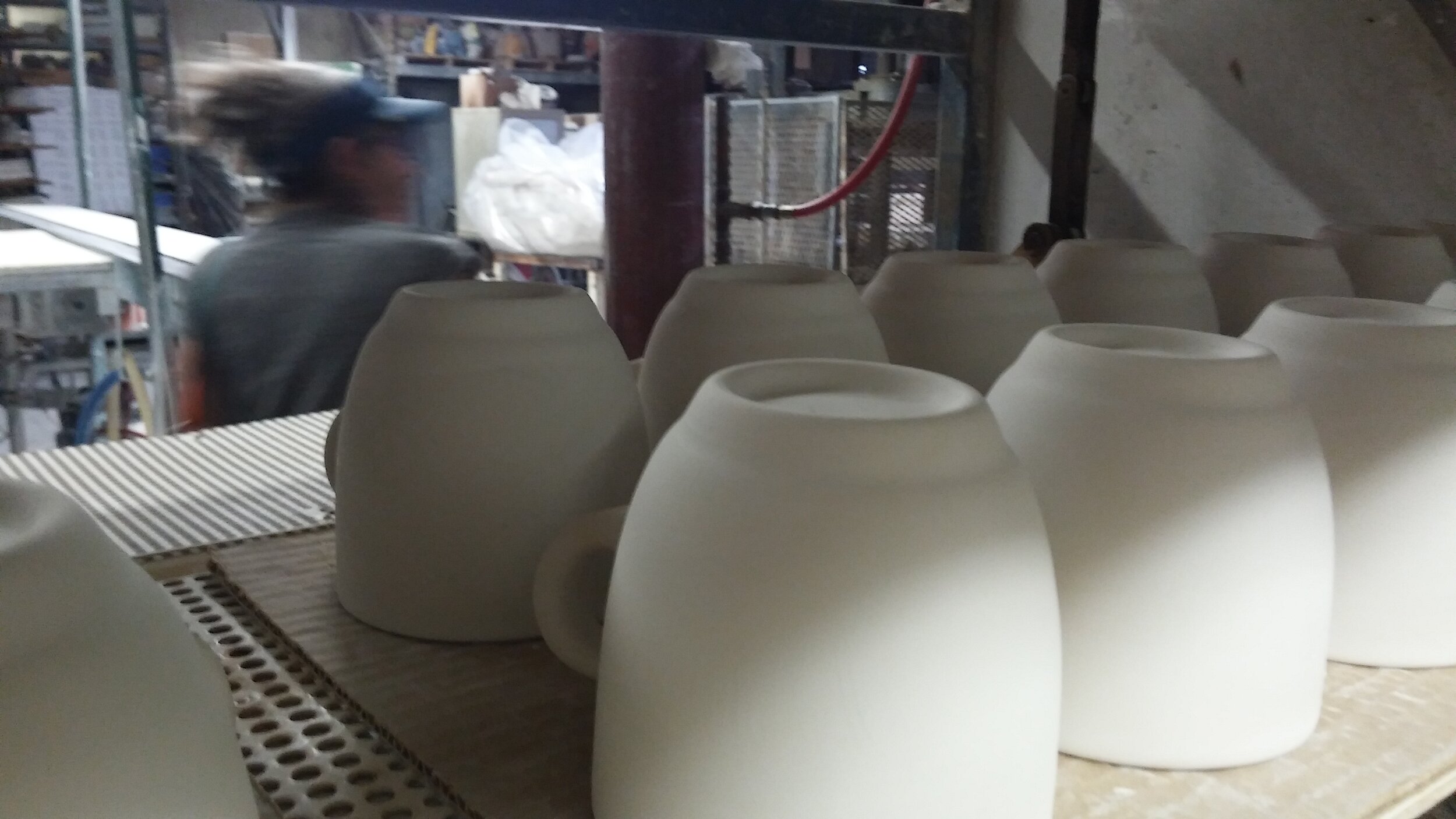
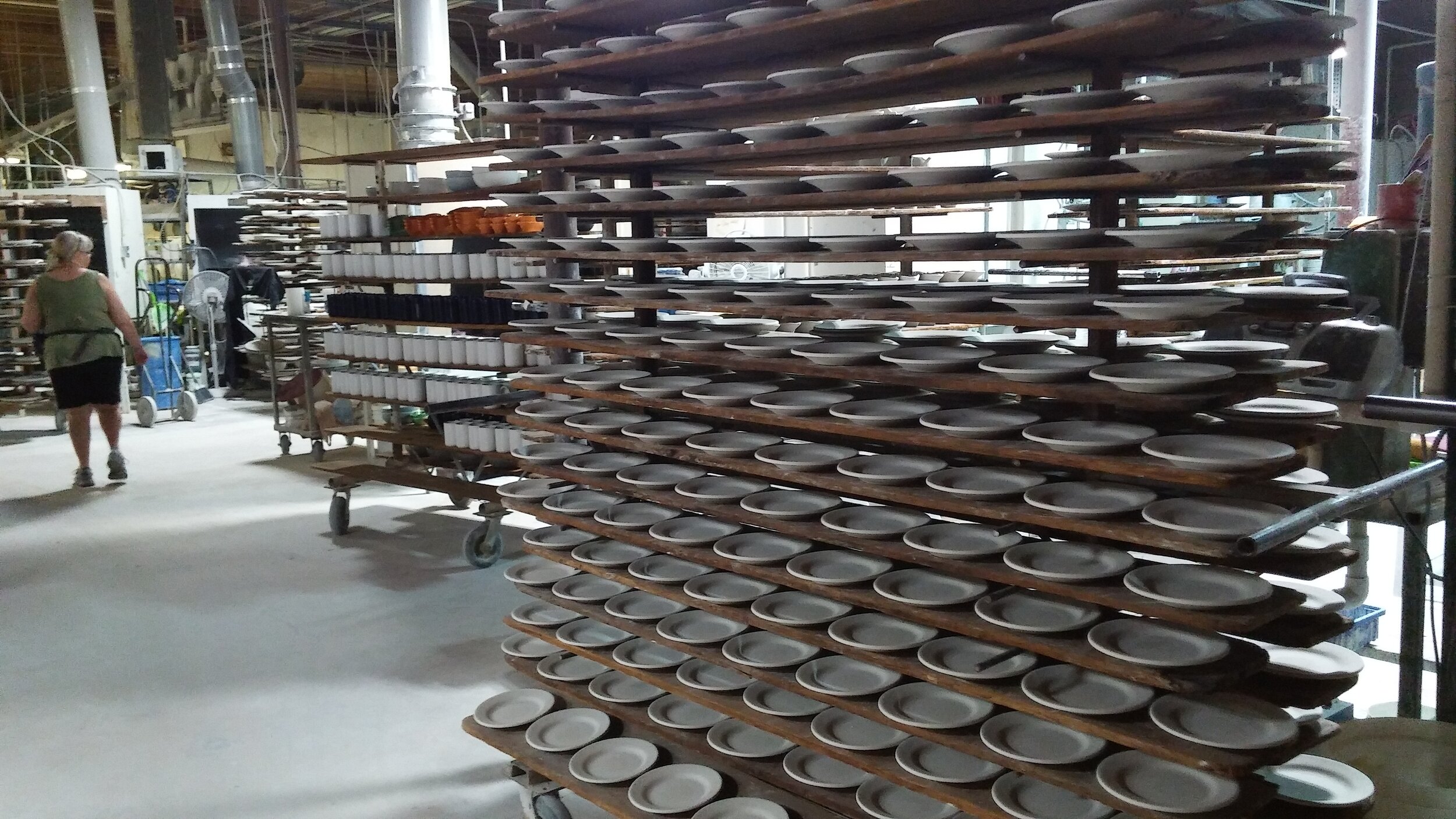
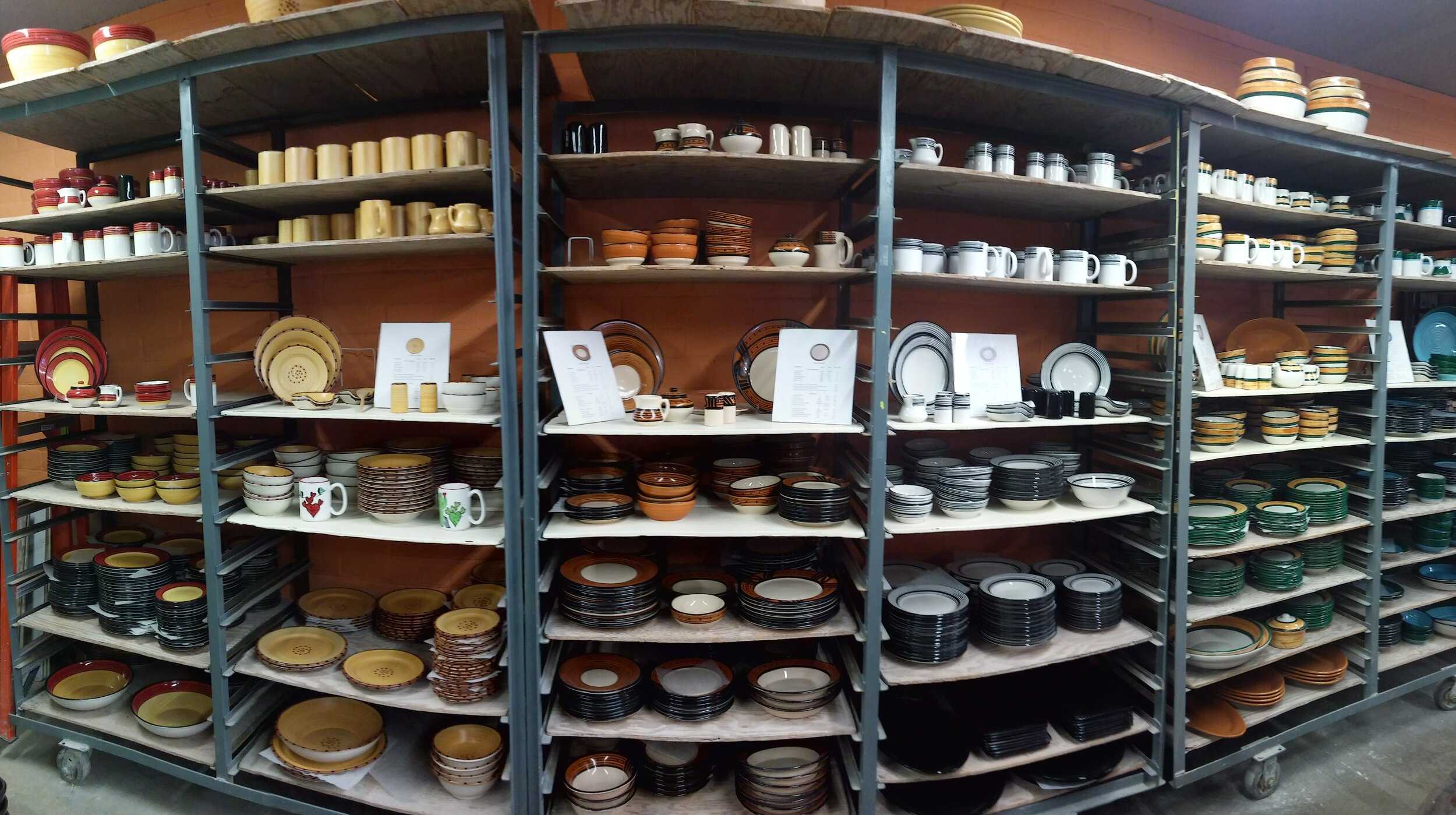
Location
H. F. Coors Factory
1600 S Cherrybell Stravenue
Tucson, AZ 85713
